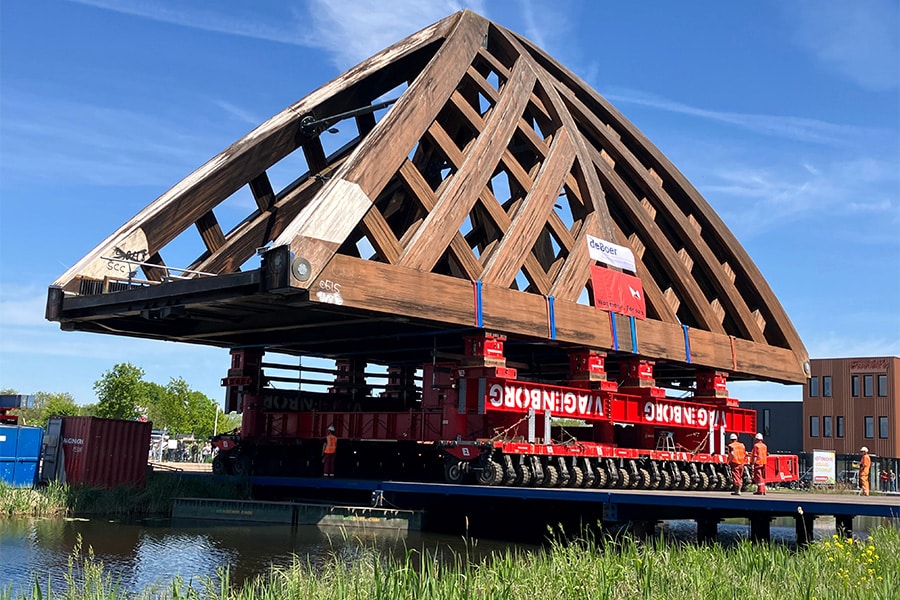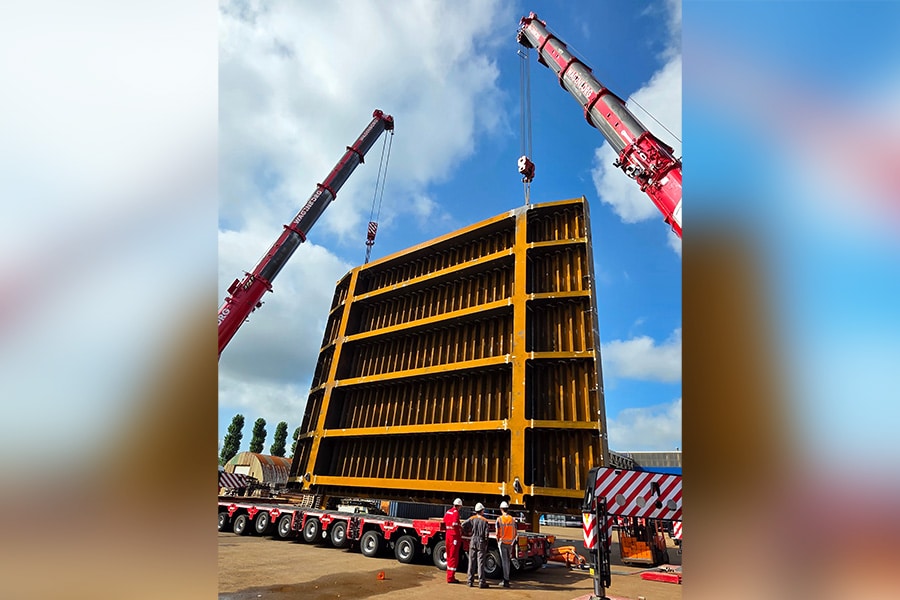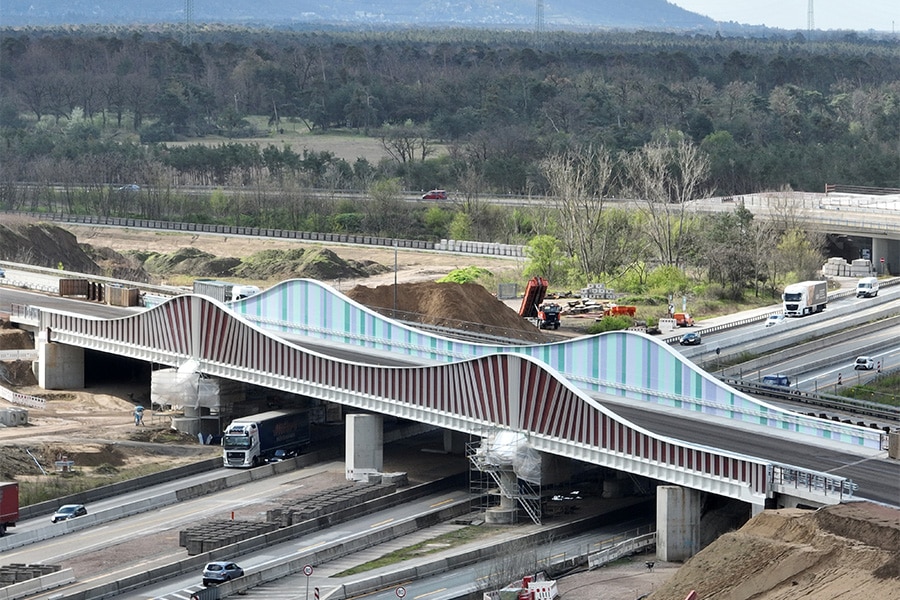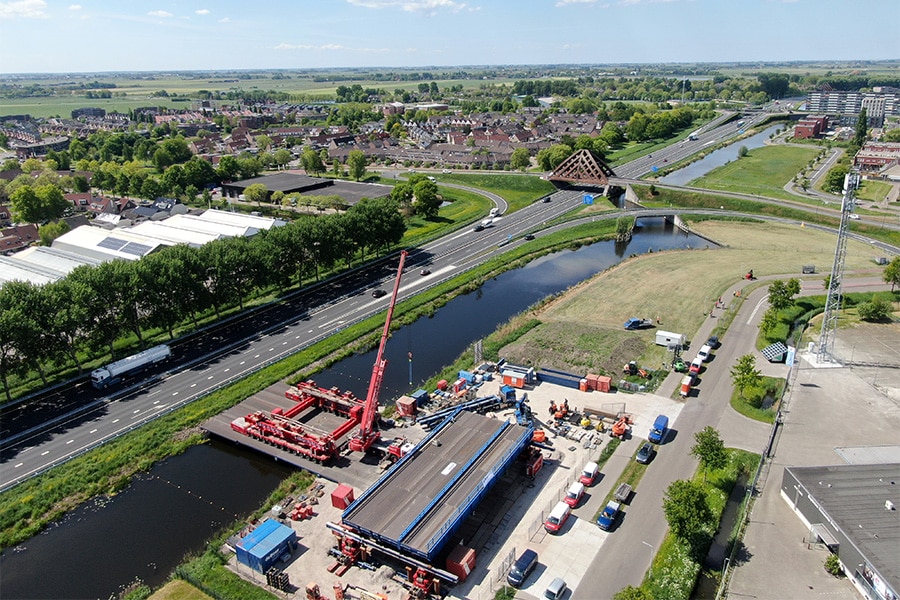
Krúsrak bridge: controlled renovation and smart allocation of contract
The renovation of the wooden Krúsrak bridge over the N7 near Sneek is in full swing. At least two years of preparation preceded the renovation. Hans van Ooijen, project manager at Rijkswaterstaat, and Theo Oenema, project manager planning study and realization at Rijkswaterstaat, explain what makes this renovation different and what issues it involves.
"It's a bold design," begins Oenema, who was also involved in the realization of the Krúsrak bridge in 2008. "The bridge is made entirely of wood where all the wood is curved. Nothing is straight. The span consists of laminated Accoya wood trusses that are bent, glued and impregnated individually. This makes it as strong as hardwood and makes it suitable for 60-ton truck traffic." Because of its design, the Krúsrak bridge even received the Wood Innovation Award in 2010.
Too much moisture in wood
Despite the durable wood and solid construction, the laminated structure proved to hold too much moisture. After more than 16 years, there are cracks in the Accoya wood and the protective paint layer is coming off, which led to moisture build-up, black spots and rusting pins. "The moisture goes in as water, and has to come out as vapor," Van Ooijen explains. "That's not the case now. Together with the Wood Research Foundation, this has been thoroughly investigated. Measurements show that the wood has an increased moisture content. The renovation is necessary anyway, especially because as the Department of Public Works we have to be able to guarantee the safety of the structure."

Conditioned conditions
The renovation involves an entire process: drying, wood repair, pin replacement and recoating under conditioned conditions. Much thought and calculation went into this. After all, how do you refurbish such a 354-ton wooden structure in a safe and responsible way? "In the end, we chose to move the bridge in its entirety to a temporary workshop. A temporary steel auxiliary bridge was installed for the period of renovation. This bridge connects the Duinterpen neighborhood with the center of Sneek. A temporary shed has been built at the workshop. Here the wooden bridge construction is thoroughly dried under conditioned conditions, which means that the temperature is carefully controlled to accelerate the drying process. This will take about two months. The entire bridge is re-coated with a protective, breathable coating. This coating has been carefully tested and will protect the Accoya wood from moisture, UV rays and abrasion for at least 25 years. In addition, while respecting the design, the architect has been instructed to design something to give the bridge additional protection against initial water intrusion."
Work divided into two contracts
What also makes this project special is that the Department of Public Works has split the work into two contracts. Contract 1 concerns the entry and exit of the bridge. This has been outsourced to CT deBoer and Wagenborg Nedlift. Contract 2 concerns the entire renovation project, which is in the hands of construction consortium HWO (Hupkes Wijma & Koninklijke Oosterhof Holman). "This cooperation is the key to success. This way, the risks are manageable for everyone, everyone can use their specialties, and the regional small and medium-sized businesses also get a chance to participate. In a renovation, you always encounter unexpected issues. By working together in this way, you work very transparently, there is a lot of trust and everything goes very smoothly and pleasantly."
After the renovation, the Krúsrak bridge will be returned to its place over the N7. The temporary steel bridge will be removed. It is expected
will happen in early 2026, depending on the weather and the course of
the work.




